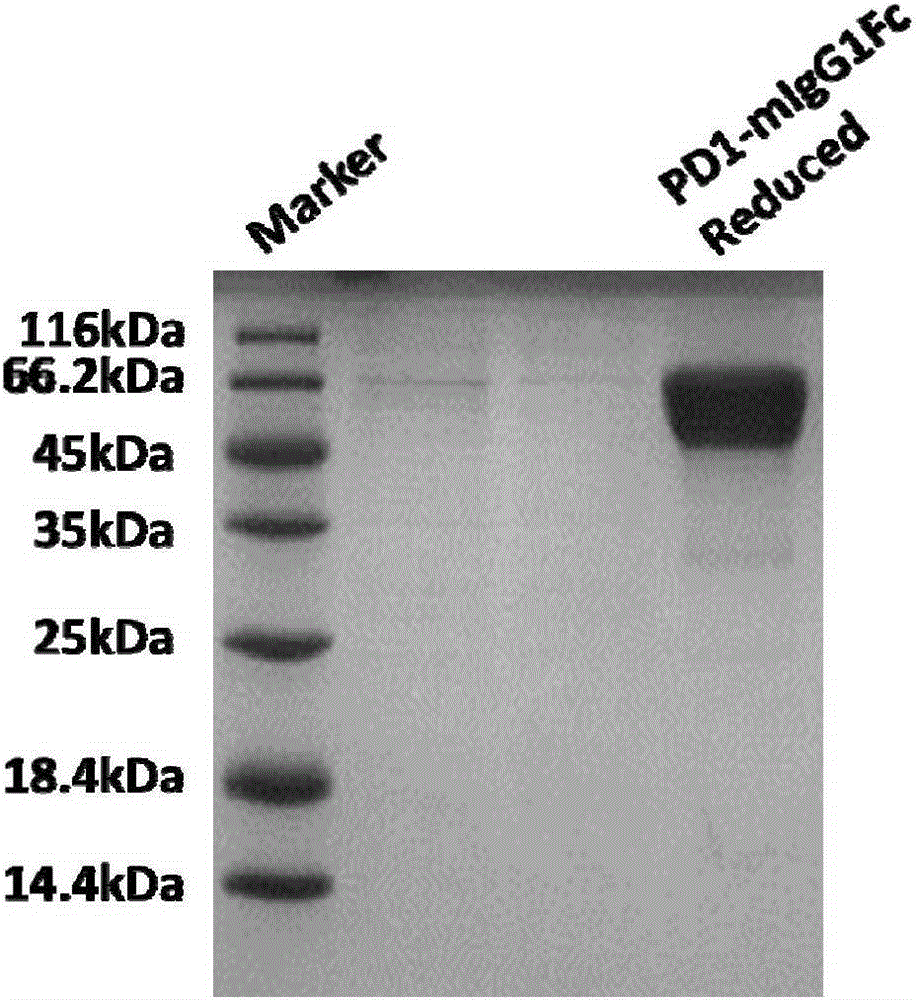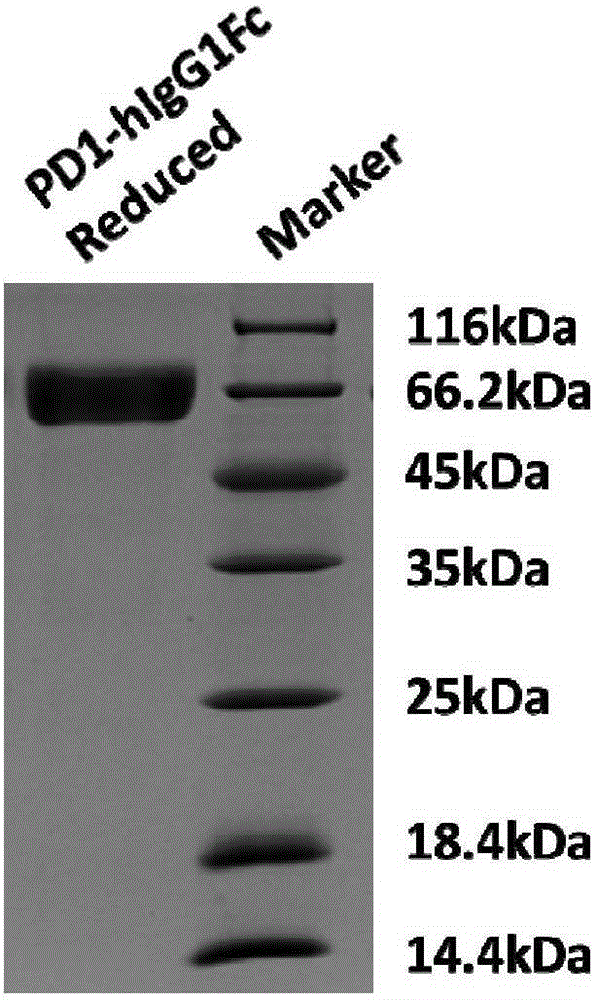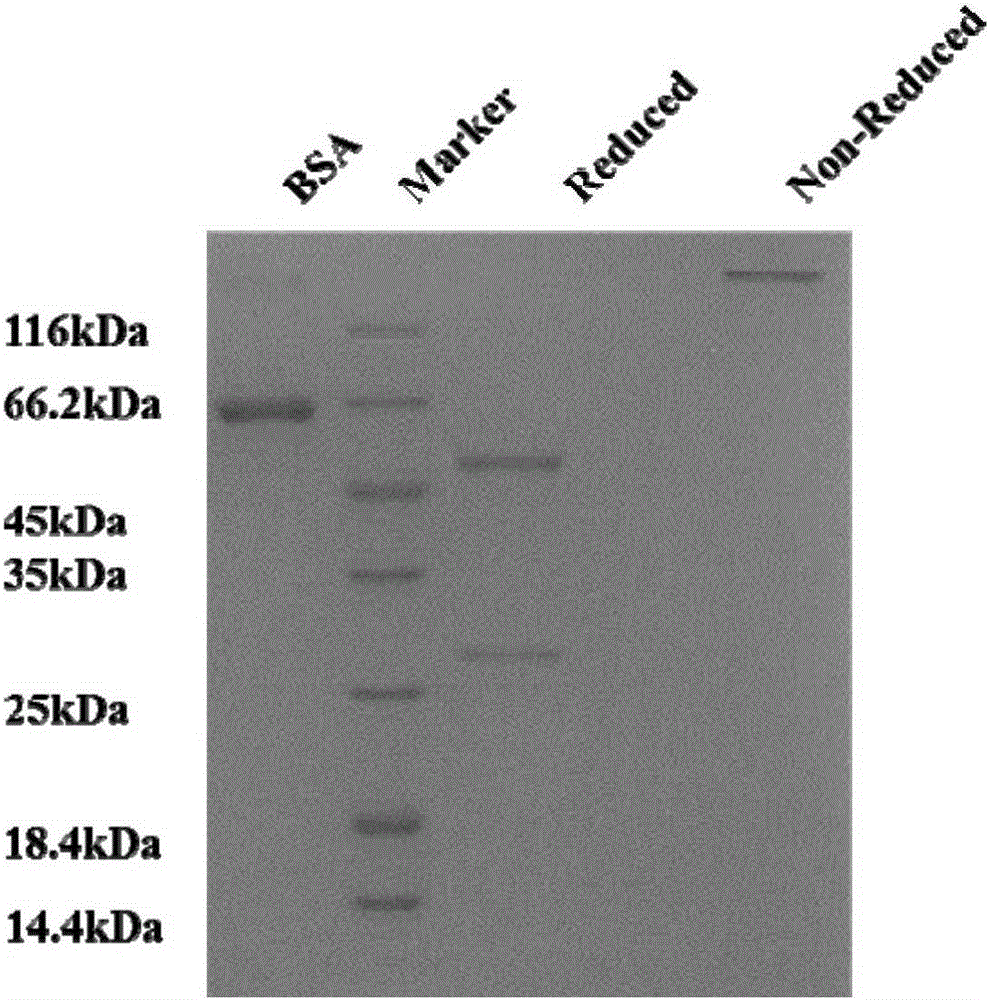Anti-PD-1 (programmed cell death 1) monoclonal antibody as well as pharmaceutical composition and application thereof
A monoclonal antibody, PD-1 technology, applied in the field of tumor therapy and molecular immunology, can solve problems such as liver damage
- Summary
- Abstract
- Description
- Claims
- Application Information
AI Technical Summary
Problems solved by technology
Method used
Image
Examples
preparation example 1
[0124] Preparation Example 1: Synthesis of Antigens PD-1-mFc, PD-1-hFc and PDL-1-hFc
[0125] 1. Synthesis of genes PD-1-mFc and PD-1-hFc
[0126] The amino acids corresponding to the extracellular fragment PD-1ECD of the gene PD-1 (Programmed cell death protein 1, NCBI GenBank: NM_005018) are respectively related to the Fc protein fragment (mFc) of TEV and mouse IgG and the Fc protein of TEV and human IgG Fragment (hFc) was fusion designed. In order to improve the expression efficiency of the target gene in the 293F cell expression system, GenScript was entrusted to optimize the nucleic acid sequence corresponding to the fusion protein sequence. The optimization mainly considered codon bias, GC Content, secondary structure of mRNA, repetitive sequence and other factors. Finally, the optimized sequences of PD-1 ECD-TEV-mFc and PD-1 ECD-TEV-hFc fusion protein genes were entrusted to GenScript to synthesize.
[0127] 2. Acquisition of pUC57simple-PD-1ECD-TEV-mFc plasmid
[...
Embodiment 1
[0158] Example 1: Obtaining of hybridoma cell line LT004 and preparation of monoclonal antibody 6F5
[0159] Mammalian cell expression system was used to express recombinant PD-1ECD-TEV-mFc as an antigen to immunize mice, and hybridoma cells were obtained by fusion of mouse spleen cells and myeloma cells. Through the screening of a large number of samples, a hybridoma cell line LT004 was obtained, which can secrete and produce monoclonal antibody 6F5 that specifically binds to PD-1. The specific method is as follows:
[0160] 1. Establishment of hybridoma cell line LT004
[0161] Using PD-1ECD-TEV-mFc fusion protein (i.e. PD-1-mFc, see Preparation Example 1) as an antigen, take the splenocytes and mouse myeloma cells from immunized BALB / C mice (purchased from Guangdong Medical Experimental Animal Center). The cells were fused into hybridoma cells according to the established method (e.g., Stewart, S.J., "Monoclonal Antibody Production", in Basic Methods inantibody Producti...
Embodiment 2
[0168] Example 2: Obtaining the Light Chain and Heavy Chain Sequences of Monoclonal Antibody 6F5
[0169] The mRNA was extracted from the hybridoma cell line LT004 prepared in Example 1 according to the method of Total RNA Extraction Kit from Cultured Bacteria (Tiangen, Cat. No. DP430).
[0170] cDNA was synthesized according to the instructions of the TransScript First-Strand cDNA Synthesis SuperMix (Transgen, AT301) kit, and PCR amplification was performed. The PCR amplification product was directly cloned by TA, and the specific operation was carried out according to the instructions of the pEASY-T1 Cloning Kit (Transgen CT101) kit.
[0171]The products of TA clones were directly sequenced, and the sequencing results were as follows:
[0172] DNA sequencing results of heavy chain variable region: (426bp)
[0173] GAGGTGAAGCTGGTGGAGTCTGGGGGAGGCTTAGTGAAGCCTGGAGGGTCCCTGAAACTCTCCTGTGCAGCCTCTGGATTCACTTTCAGTAGCTATGGCATGTCTTGGGTTCGCCAGACTCCGGAGAAGAGTCTGGAGTGGGTCGCAACCATTAGTGGT...
PUM
 Login to View More
Login to View More Abstract
Description
Claims
Application Information
 Login to View More
Login to View More - R&D
- Intellectual Property
- Life Sciences
- Materials
- Tech Scout
- Unparalleled Data Quality
- Higher Quality Content
- 60% Fewer Hallucinations
Browse by: Latest US Patents, China's latest patents, Technical Efficacy Thesaurus, Application Domain, Technology Topic, Popular Technical Reports.
© 2025 PatSnap. All rights reserved.Legal|Privacy policy|Modern Slavery Act Transparency Statement|Sitemap|About US| Contact US: help@patsnap.com



